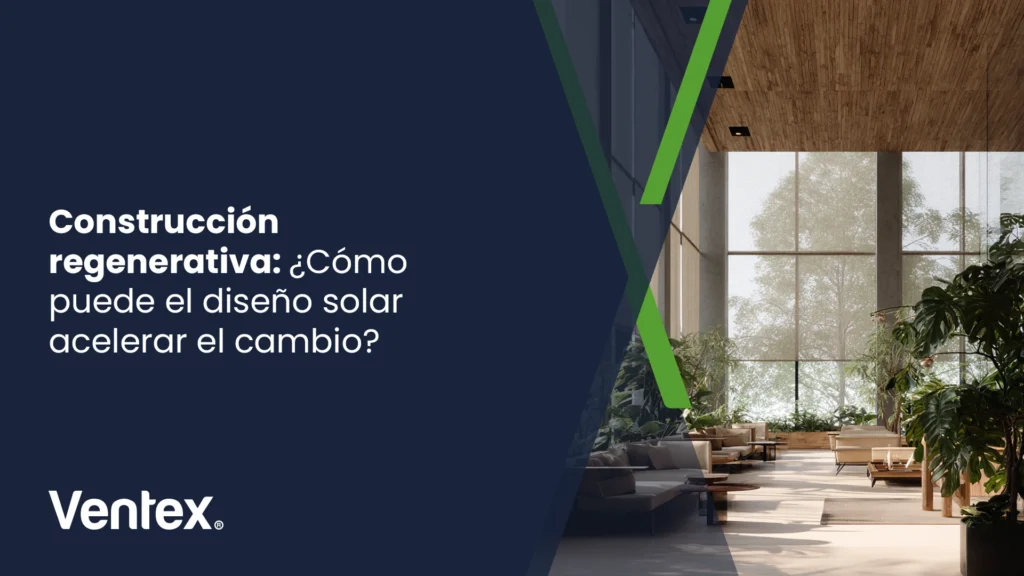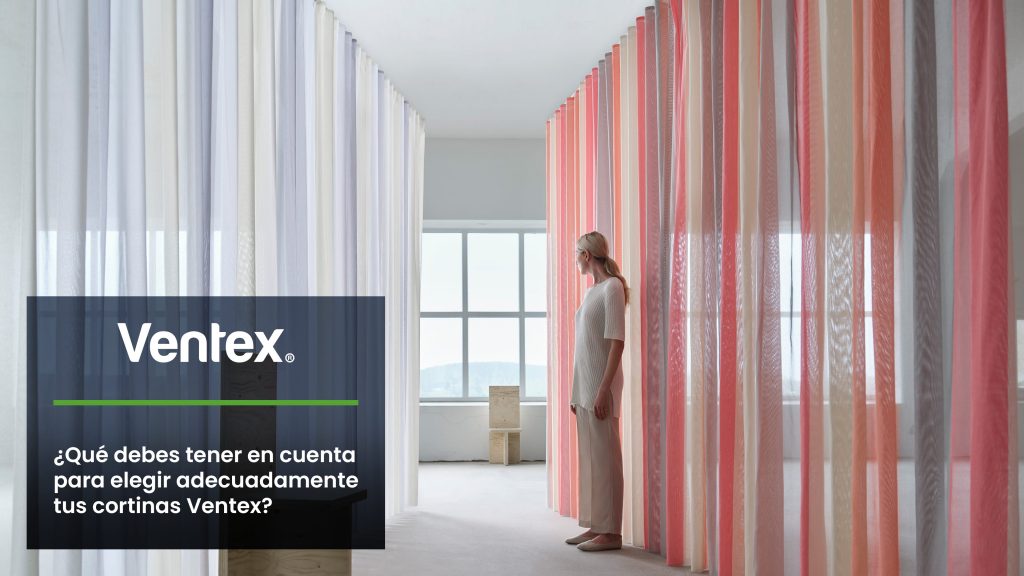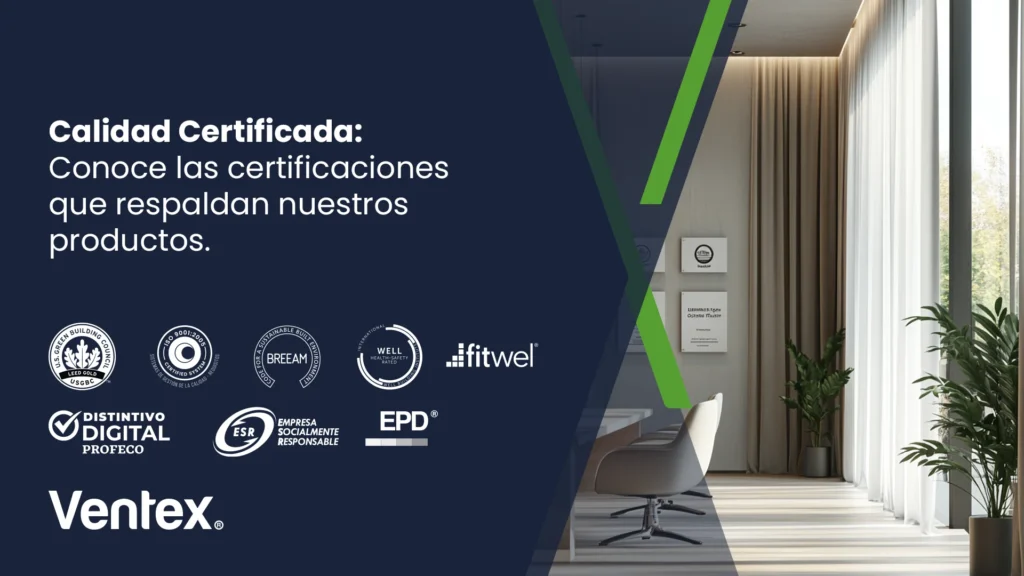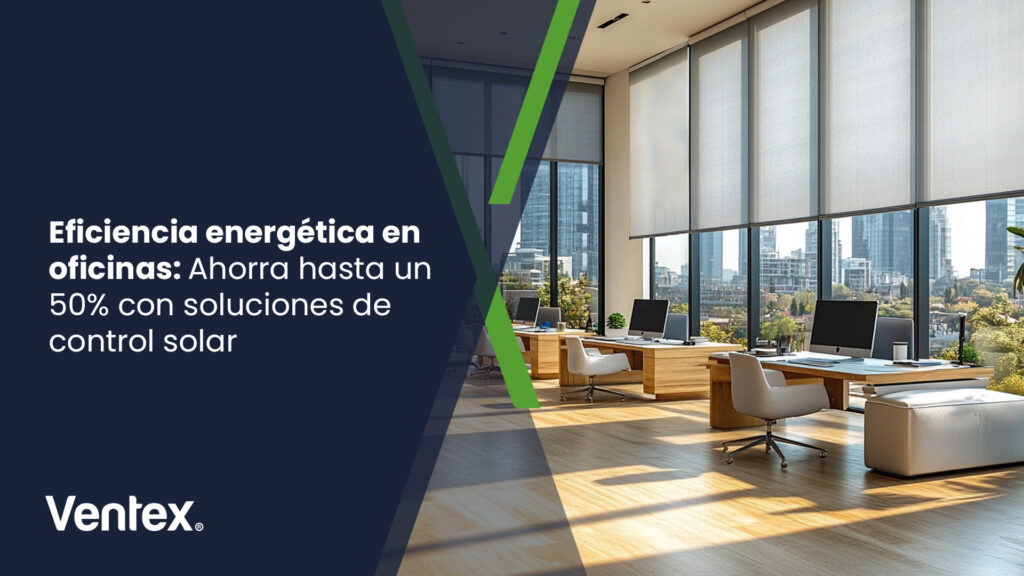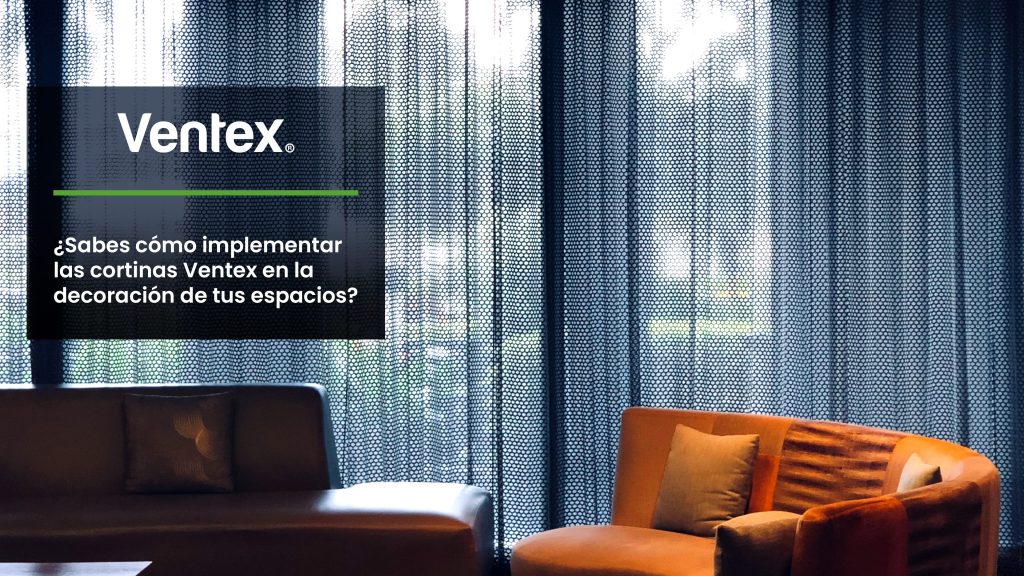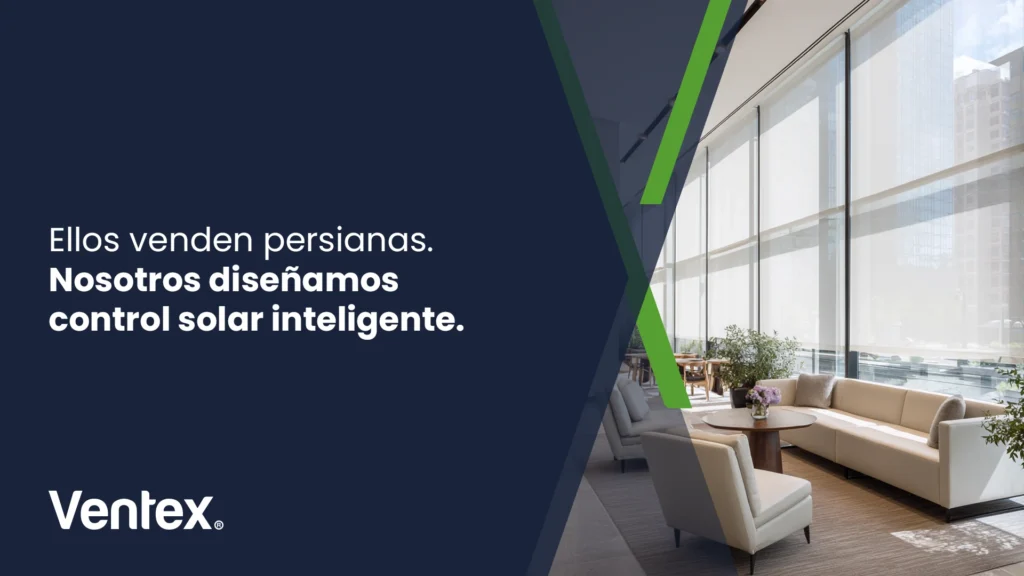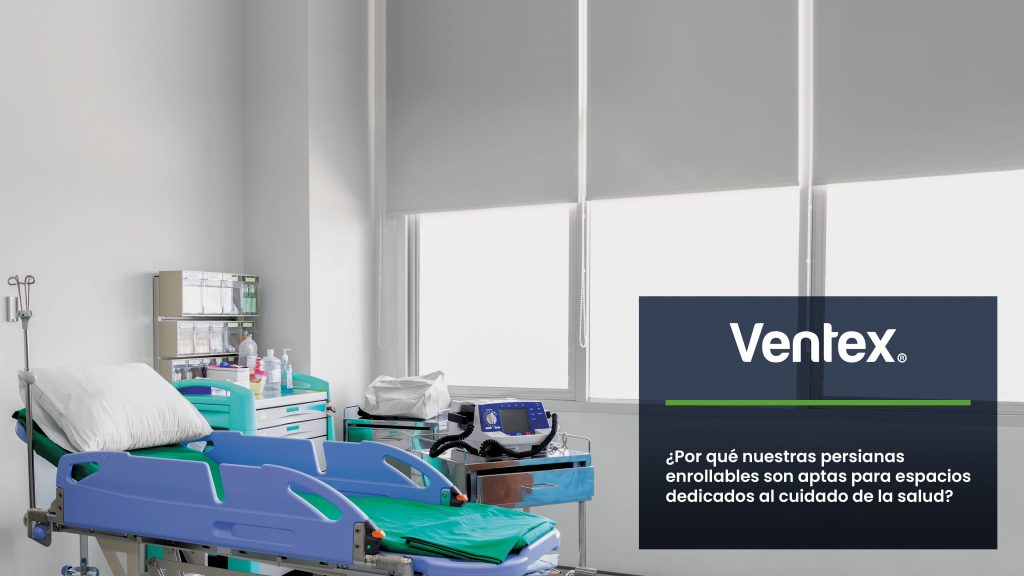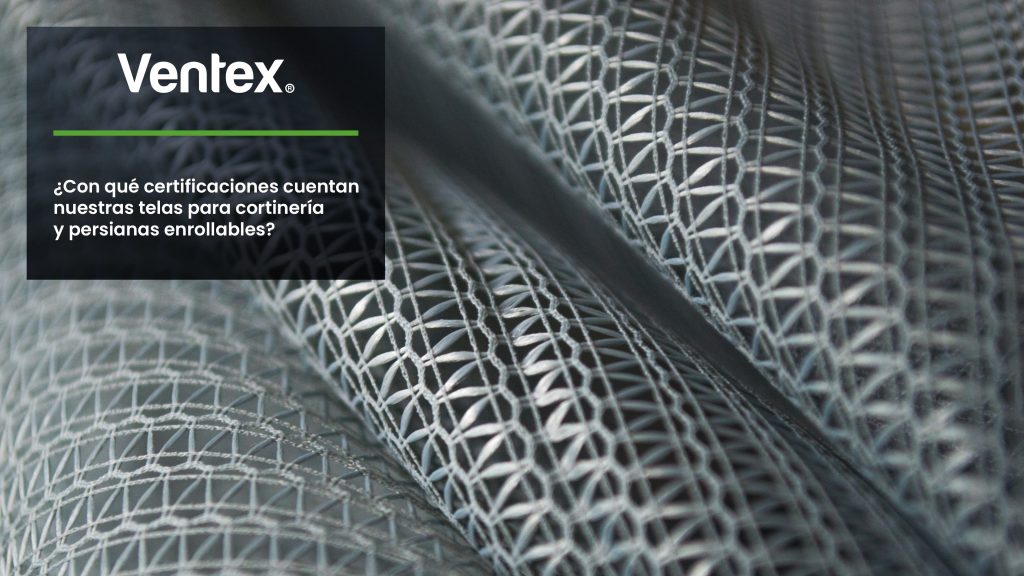In the face of a global climate emergency, architectural design can no longer aim to simply “do less harm.” The new challenge is regeneration: designing buildings that give back more than they take—to both the planet and the people who inhabit them.
This concept lies at the heart of regenerative design, a key theme in the Blueprint for Building the Breakthrough report released by the 2Si Foundation in 2024. The report asks a critical question:
“How do we move from isolated solutions to scalable systems that drive real impact?”
At Ventex, we believe one of the most scalable, accessible, and high-impact solutions is intelligent solar controlthrough motorized shading systems.
The power of well-designed solar shading
Solar design is not new. But thanks to modern automation, sensor integration, and IoT connectivity, shading systems are evolving from static elements into active contributors to building performance. Here’s how:
-
Reduce indoor heat load by up to 50%, cutting cooling demand dramatically.
-
Minimize HVAC usage, leading to lower energy consumption and reduced carbon emissions.
-
Optimize natural light without sacrificing visual comfort—improving productivity and wellbeing.
-
Adapt in real-time based on sunlight, temperature, occupancy, and schedules.
From sustainability to regeneration
More and more companies are moving from checklists like LEED and BREEAM to holistic frameworks like WELLand Fitwel, which integrate daylight, air quality, mental wellness, and physical comfort.
But regeneration goes even further:
-
It blends architecture with natural systems.
-
It prioritizes long-lasting, recyclable, and low-impact materials.
-
It views buildings as living, adaptive systems—not fixed structures.
Smart solar shading plays a vital role in this shift, transforming façades into climate-responsive surfaces.
It’s not just about comfort—it’s climate strategy
The 2Si Foundation emphasizes that solutions must be:
-
Scalable
-
Accessible
-
Reliable
Ventex meets all three:
-
Our shading systems integrate into residential, corporate, institutional, and hospitality projects.
-
They offer flexible management—automated, local, or remote.
-
Our technical fabrics are durable, certified, and designed for long-term performance.
Ventex: Building the future with light
Regeneration is not a utopia—it’s a roadmap.
And it begins with decisions like how we manage light, what materials we choose, and the legacy each project leaves behind.
At Ventex, we collaborate with architects, developers, and specifiers to deliver solar control solutions aligned with environmental, social, and performance goals.
Are you designing for the future?
Start with the light.
This article draws insights from the “Blueprint for Building the Breakthrough” report by 2Si Foundation (2024).
Construcción regenerativa: ¿Cómo puede el diseño solar acelerar el cambio?
En el contexto actual de crisis climática, el diseño arquitectónico no puede limitarse a “hacer menos daño”. Hoy, el objetivo debe ser regenerar: construir espacios que devuelvan más al planeta y a las personas de lo que consumen.
Esta visión forma parte del enfoque de construcción regenerativa, un concepto central del informe Blueprint for Building the Breakthrough publicado por la 2Si Foundation en 2024. El documento plantea una pregunta clave:
“¿Cómo pasamos de soluciones aisladas a sistemas escalables que generen impacto real?”
Desde Ventex, creemos que una de esas soluciones escalables —económica, técnica y funcionalmente— es el control solar inteligente mediante persianas y cortinas automatizadas.
El poder del diseño solar bien aplicado
El diseño solar no es nuevo. Pero hoy, con el avance de la automatización, la integración con sensores y el IoT, las soluciones de sombreado están dejando de ser pasivas para convertirse en actores activos de la eficiencia energética. ¿Cómo?
-
Reduciendo hasta un 50% la carga térmica interior, al bloquear el exceso de radiación solar en las horas más críticas.
-
Minimizando el uso de sistemas HVAC, especialmente en climas cálidos, lo que reduce tanto el consumo energético como las emisiones de CO₂.
-
Aprovechando la luz natural sin comprometer el confort visual, mejorando así la productividad y el bienestar.
-
Adaptándose en tiempo real gracias a la automatización basada en temperatura, posición solar, horarios y ocupación.
De sostenibilidad a regeneración
Muchas empresas ya están migrando de certificaciones como LEED o BREEAM a conceptos más holísticos como WELL y Fitwel, que integran salud, luz, ventilación, y confort psicológico.
Pero la regeneración va un paso más allá:
-
Integra la arquitectura con su entorno natural.
-
Prioriza materiales durables, reciclables o reutilizables.
-
Reconfigura el edificio como sistema vivo: dinámico, adaptativo y responsable.
Y es aquí donde el diseño solar, junto con una selección adecuada de telas técnicas y mecanismos inteligentes, puede transformar una fachada en una interfaz sensible al ambiente.
No es solo confort: es estrategia climática
El informe de 2Si Foundation insiste en que las soluciones deben ser:
-
Escalables
-
Accesibles
-
Confiables
Ventex cumple con estos tres puntos:
-
Nuestras soluciones se integran en todo tipo de proyectos (corporativos, residenciales, educativos, institucionales).
-
Los sistemas motorizados pueden gestionarse local o remotamente, y adaptarse a cualquier presupuesto.
-
Las telas técnicas cuentan con respaldo internacional, certificaciones y larga vida útil.
Ventex: contribuyendo a la arquitectura del futuro
Creemos que la regeneración no es una utopía: es una hoja de ruta.
Y empieza con decisiones concretas como qué materiales usamos, cómo gestionamos la luz, y qué impacto dejamos en el entorno.
En Ventex, colaboramos con despachos de arquitectura, desarrolladores y especificadores para ofrecer soluciones de control solar alineadas con objetivos ambientales, sociales y normativos.
¿Diseñas para el futuro?
Empieza por la luz.
Este artículo se inspira en el informe “Blueprint for Building the Breakthrough” publicado por 2Si Foundation en 2024.

